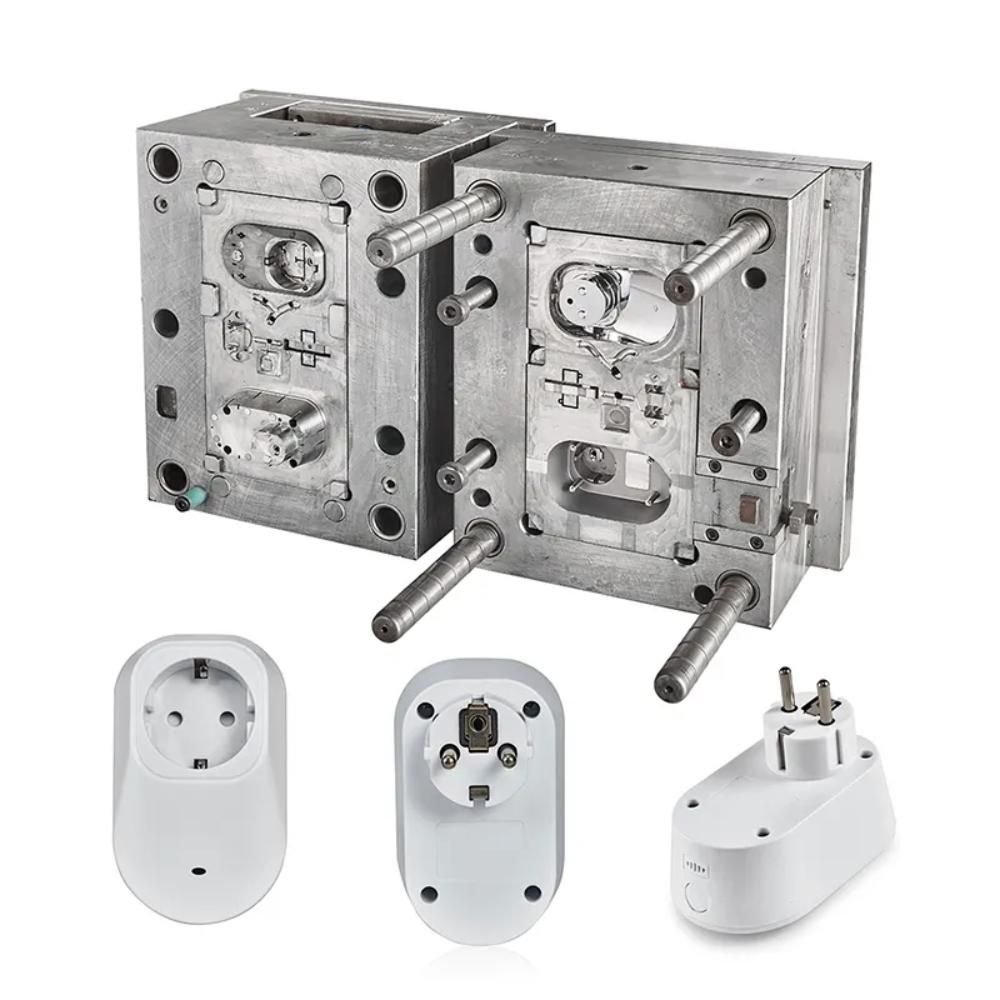
Molding service:
Molding service is a core offering that transforms raw materials into customized components through mold forming technology. Its essence lies in utilizing the rigid framework of molds to achieve precise material shaping. Weldo Machining Ltd. provides both injection molding and overmolding services, primarily serving applications such as plastic construction and metal part production.
Below is an introduction and comparison of these two services:
1. Injection Molding
Injection molding involves injecting molten plastic (thermoplastic or thermoset) into a metal mold cavity under high pressure. After cooling and solidification, the mold is opened to release the finished product.
Its core advantages lie in high-efficiency mass production (cycle times ranging from seconds to minutes) and the ability to achieve complex geometries (e.g., internal snaps, threaded structures).
Materials:
Supports over 20,000 types of thermoplastics (e.g., ABS, PC, PA) and thermosets (e.g., phenolic resin), meeting diverse strength and temperature resistance requirements.
Example: Automotive dashboard brackets utilize 30% glass-fiber reinforced PA66, achieving lightweighting (40% lighter than metal) and high rigidity through injection molding.
Precision Control:
Mold tolerances as tight as ±0.001mm. Multi-cavity mold designs enable simultaneous production of dozens of parts, achieving daily output exceeding 100,000 units.
Case Study: Medical syringes achieve wall thickness uniformity of ±0.02mm through injection molding, ensuring injection precision.
Cost Efficiency:
Unit costs as low as $0.01 per piece during mass production (e.g., plastic bottle caps), reducing costs by over 90% compared to CNC machining.
Typical Applications
Automotive Industry: Bumper components, air intake grilles (unit weight optimized to 1.2kg, 60% lighter than traditional steel parts).
Electronics & Appliances: Smartphone mid-frames (utilizing nano-injection molding for seamless metal-plastic integration, tripling drop resistance).
Packaging Industry: PET preforms (high-speed injection molding achieves 120 preforms per minute, 50% more efficient than blow molding).
Industry Benchmark Cases
Tesla Model 3 Interior Components: Dual-color injection molding integrates black rigid PC with white flexible TPU in a single process, reducing assembly steps by 3 and boosting yield to 99.2%.
Johnson & Johnson Medical Catheter Connector: Produces precision components with 0.15mm wall thickness via micro-injection molding. Gas-assisted injection eliminates sink marks while meeting FDA biocompatibility standards.
2. Overmolding
Overmolding is a secondary injection molding technique that sequentially injects two or more materials within the same mold to achieve chemical or mechanical bonding between materials.
Its core value lies in functional integration (e.g., combining hard and soft materials, anti-slip treatment) and enhanced design flexibility (e.g., multi-color textures).
Material Compatibility:
Bond strength between thermoplastics (e.g., PP) and elastomers (e.g., TPE) reaches 3MPa, far exceeding adhesive bonding (0.5MPa).
Metal inserts (e.g., stainless steel screws) achieve permanent bonding with plastics through pretreatment (sandblasting, primer coating), yielding pull-out forces ≥500N.
Process Complexity:
Requires dual-color injection molding machines or rotary molds, increasing mold costs by 30%-50% compared to single-color molding, but reducing assembly costs by 60%.
Case Study: Power tool handles integrate rigid ABS shells with soft TPE anti-slip layers via overmolding, reducing production cycles from 120 seconds to 45 seconds.
Design Flexibility:
Supports partial overmolding (e.g., button areas) or full encapsulation (e.g., remote casings) with 0.1mm precision control.
Example: Dyson hairdryer housing employs PC+ABS substrate overmolded with silicone, achieving a matte texture and slip resistance through co-extrusion.
Typical Applications
Consumer Electronics: Wireless earbud charging case (PC hard shell overmolded with TPU soft rubber, passing 1.5m drop tests).
Automotive Interiors: Steering wheel (PU foam overmolded with genuine leather, achieving bubble-free bonding via low-pressure injection molding).
Medical Devices: Blood glucose meter housing (ABS base material overmolded with medical-grade silicone, compliant with ISO 10993 biocompatibility standards).
When selecting a molded parts service provider,
prioritize their mold design capabilities, material database expertise, and comprehensive quality control systems to ensure seamless transition from prototyping to mass production.
